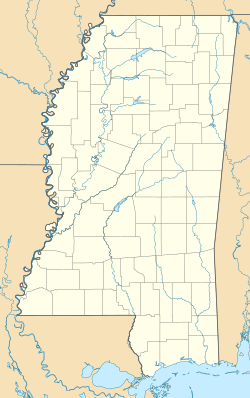Hopewell, Covington County, Mississippi facts for kids
Quick facts for kids
Hopewell, Mississippi
|
|
|---|---|
| Country | United States |
| State | Mississippi |
| County | Covington |
| Elevation | 407 ft (124 m) |
| Time zone | UTC-6 (Central (CST)) |
| • Summer (DST) | UTC-5 (CDT) |
| Area code(s) | 601 & 769 |
| GNIS feature ID | 710648 |
Hopewell is a small community in Covington County, Mississippi, United States. It is called an "unincorporated community" because it does not have its own local government like a city or town. Instead, it is part of the larger county.
Contents
History of Hopewell
Hopewell is one of the oldest settlements in Covington County. Early settlers helped shape the community.
Early Settlers and Naming
One of the first people to settle in Hopewell was Thomas Ates. He bought land from the Choctaw Native Americans. Ben and Mary Duckworth were also early settlers. They named the town "Hopewell" after a word from the Bible. For them, "hope" meant to trust, expect, wait, and endure.
After the American Civil War, many formerly enslaved people made Hopewell their home. They helped build the community.
Schools in Hopewell
Education has always been important in Hopewell.
New Hopewell School
The New Hopewell School was built in 1885. It was located a few miles north of the main town. This school taught students until 1950. Today, the New Hopewell Church and Cemetery are on the same site.
Hopewell Colored Separate School District
In 1922, leaders in Covington County created the Hopewell Colored Separate School District. This was done because Black citizens asked for better schools. At this time, schools were still separated by race.
Two years later, Black residents of Hopewell took the county to court. They felt they were being taxed twice for schools. The boundaries for the Black school district only included properties owned by Black families. However, the older, larger White school district included properties owned by both White and Black families. This meant Black families were paying taxes to both districts. The judge decided against the citizens. He said it was just a coincidence that only Black families lived in both districts.
Rosenwald School
In the 1920s, another school was built in Hopewell. This school was a Rosenwald School. These schools were built across the Southern United States to provide better education for African American children during a time of segregation. Many were funded by Julius Rosenwald, who was the head of Sears, Roebuck and Company.
This Rosenwald School is still open today. It is now known as Hopewell Elementary School.
School Integration Efforts
For many years, schools in the United States were segregated, meaning Black and White students went to separate schools. In 1966, a lawsuit was filed to try and integrate the schools in Hopewell. This meant bringing Black and White students together into the same schools.
The lawsuit continued for a long time. Finally, in 2006, the school board and the U.S. Department of Justice agreed on a plan. This plan would change how students traveled to school. Some people, both Black and White, were unhappy with the plan because it meant students would have to travel longer distances. Some citizens even went to court to challenge the old order that had kept schools separate for so long.




